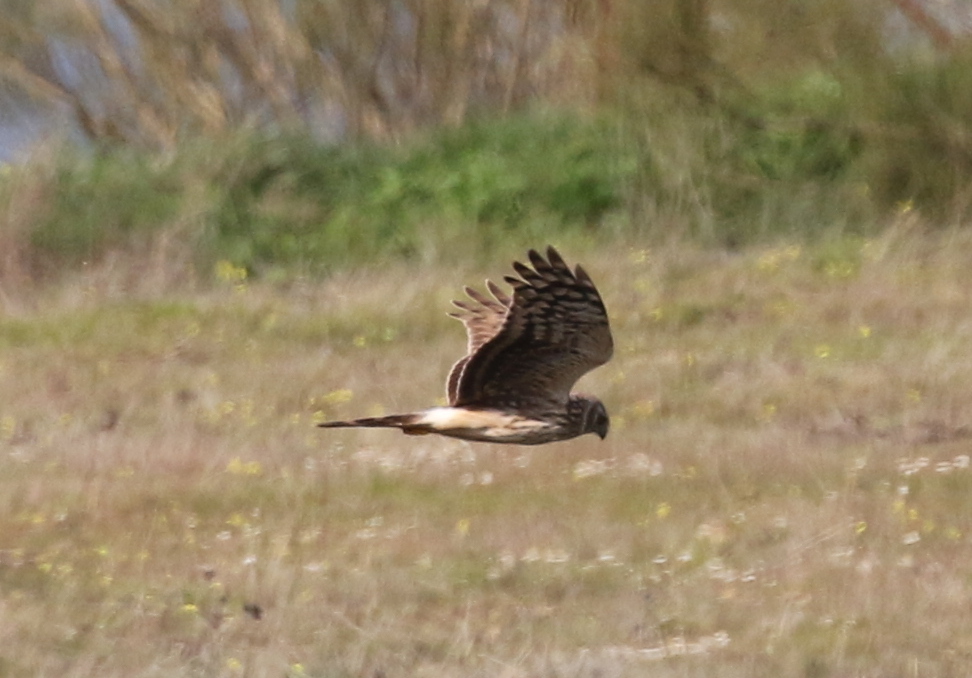A five day International Tour to Extremadura, organised together our friends from Oriole Birding. An annual destination for us, this year we did the winter version of the tour again. If you like what you see, you are welcome to join us for our next visit, in Spring 2021!
FRIDAY 31ST JANUARY
Our 06.45 flight from London Stansted arrived into Madrid a few minutes early, and with typical Spanish efficiency, our bags were there waiting for us when we cleared passport control. It didn’t take too long before we picked up our rental minibus and got underway, on the long drive down to Extremadura.
The sun was out now in the capital and as we made our way out through the suburbs a small kettle of White Storks was circling over the motorway, possibly early migrants on their way north. We also encountered several groups of Common Magpies, up to ten at a time, flying over. A common bird here, but there were so many we wondered whether they might be on their way somewhere rather than just local birds. Out into the countryside, and we started to see numerous Red Kites and more White Storks, with several on their untidy nests on buildings and pylons by the road, as well as our first Iberian Grey Shrikes on the wires.
We could see the edge of the cloud ahead of us and we didn’t get far into our journey before we drove into it. From then on, it was rather grey, misty, with patches of drizzle. When we stopped for lunch at the services beyond Talavera, it had stopped raining and the weather looked to be brightening up a bit. A Crested Lark was running around on the tarmac in the car park and a Common Buzzard perched on a nearby pylon.
After lunch, we drove back into the cloud and rain for a while, but then as it started to clear again we spotted our first Common Cranes. A couple of the group saw three one side of the road first, in the open dehesa woodland, and then we drove past a larger flock of about twenty or so on the other side, in between the trees, which everyone was able to get onto.
We turned off the motorway to Saucedilla and parked by the Visitor Centre for the Embalse de Almaraz-Arrocampo nature reserve, which was closed. Three Barn Swallows flew over – we would see a lot this trip, with birds seeming returning early in numbers this year, this far south. A White Wagtail was walking round on the short grass.
As we walked down to the first hide, a large mixed flock of finches flew up from the rough ground. There were well over 100 birds, including a good number of Linnets but up to half were European Serins. We got some in the scope, feeding on the ground, then flying up onto the fence and perching in the trees over by the Visitor Centre, the males with their bright yellow breasts. A couple of Western Marsh Harriers came up, patrolling over the reeds, and beyond we spotted a smaller raptor hovering in the distance. It was a Black-winged Kite, so we got it in the scope for a closer look. The weather seemed to warm up a little, and three Griffon Vultures circled up and drifted over.
From down by Hide 1, we could hear Penduline Tits calling and looked across to see a pair perched in the tops and picking at the seedheads of the bulrushes. We got them in the scope, but unfortunately they dropped down again before everyone could see them. A couple of Kingfishers were calling, and zipping back and forth low over the water, but wouldn’t perch out in the open. A lone Glossy Ibis flew up from the back of the sedge beds and dropped down to the fields beyond, out of view. A flock of Cattle Egrets flew across further back, off around the other side of the reserve.
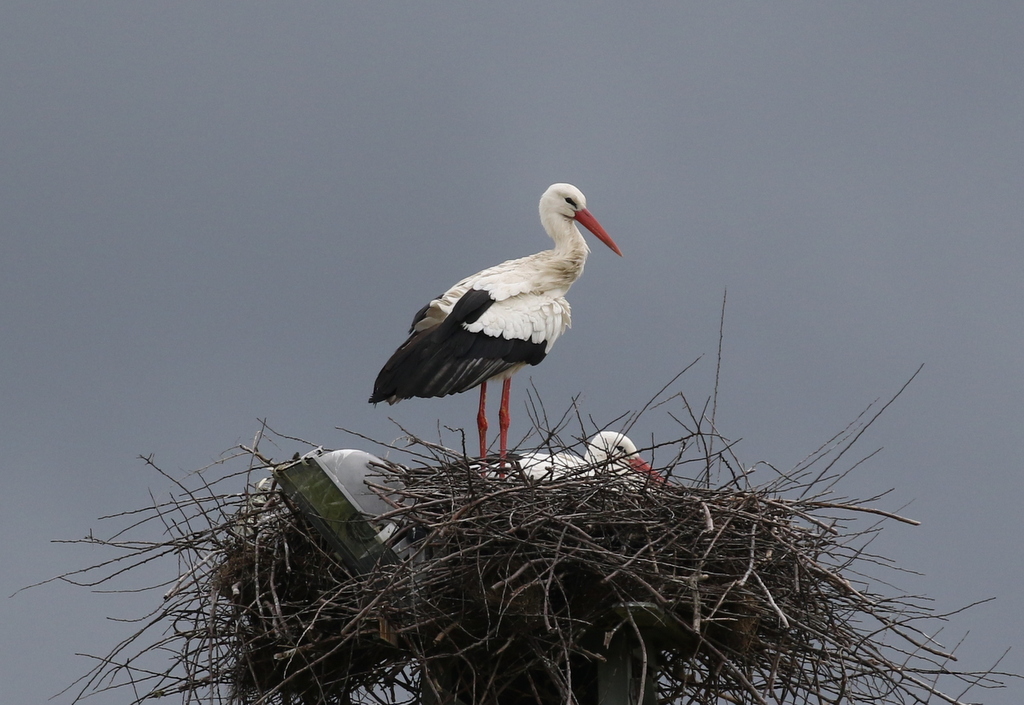
As we walked on down the track beyond the hide, we could see several pairs of White Storks on nests, one of which was quite close. The birds flew off as we walked past, dropping down to the fields nearby, but a little later, the pair flew back in behind us, and we could hear their bill clapping display as they greeted each other.
There were several Chiffchaffs in the sedges, flitting around flycatching, and a couple of Sardinian Warblers which were typically more skulking. A Hoopoe landed briefly in a tree, before flying off over the fields, and a Starling perched in the brambles nearby was of the common, spotted variety which occurs here in winter. A Green Sandpiper flew overhead calling. We heard the grating calls of one or two Western Purple Swamphens, and a couple of times one flew up out of the reeds, but quickly dropped back down again. There was no further sign of the Penduline Tits, unfortunately. Walking back round past Hide 1, we checked out the sedges in front of the hide again. A smart male Spanish Sparrow was perched in the brambles in a group of females, so we had a look at it in the scope.
Driving through the village, two Spotless Starlings were on the wires, our first confirmed ones of the trip. We made our way round to the hides on the other side of the reservoir, and stopped by Hide 5. There was not much on the pool here today, just a few Mallard. Several more Barn Swallows were hawking for insects low over the water. A Common Sandpiper came up from the smaller pool on the other side of the road, and landed on the muddy edge at the back where it fed along the shore with a Grey Wagtail. A Black-winged Kite flew out of the trees and away over the road, but a little later, one of the group spotted the same or another Black-winged Kite perched in the trees at the back beyond the water. Another Hoopoe flew over our heads and several White Wagtails and a small flock of Skylarks was feeding out in the grassy field.
Carrying on down the road, we couldn’t find the flock of Cattle Egrets we had seen earlier from round on this side now. We still had a bit of travelling to get to the hotel, so we decided it was time to be heading back. Before we got back to the village, we stopped to scan another large area of sedges and noticed yet another Black-winged Kite hovering over the fields beyond. It landed on a tree down along a side track, so we set off after it, but we got distracted on the way by an Iberian Grey Shrike on the fence alongside us. We stopped to watch it, dropping down to the ground and back up to another fence post further along each time.
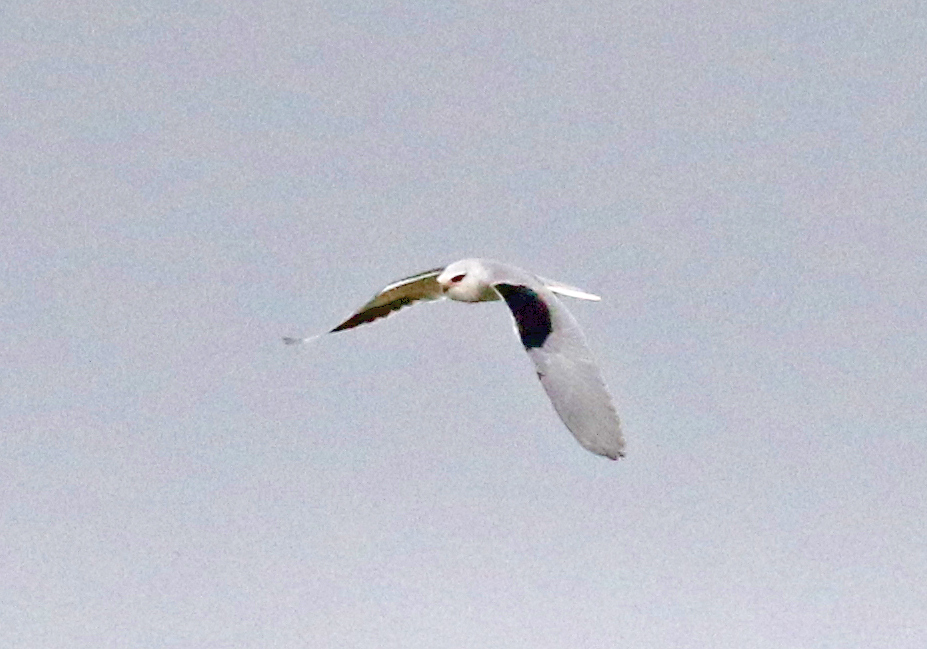
The Black-winged Kite was now off again, and we drove down to where it was hovering, but it flew off over the fields when we pulled up. We had a quick look at the southern arm of the reservoir on our way back to the motorway. There were lots of Cormorants out on the concrete wall in the middle of the water, but not much else.
All things considered, we had been very lucky with the weather – we quickly drove into patches of misty low cloud and drizzle again on the journey south on the motorway. Three more Common Cranes flew over the road ahead of us, heading off to roost. We got to our hotel and checked in. Then after a short break to get settled in, we enjoyed a welcome drink with a selection of local cheeses, salami and chorizo, followed by a delicious traditional meal.
SATURDAY 1ST FEBRUARY
It looked foggy and damp outside when we met for breakfast, but the fog had lifted by the time we met at the minibus and although it was still very cloudy the light was beginning to improve as the sun started to come up. One or two Corn Buntings were singing as we set off and a Hoopoe perched on the wires by the access road. We drove through Trujillo and out along the Santa Marta road. Parking by a small reservoir, as we got out of the minibus, an Iberian Grey Shrike was perched on the bushes in front of us. We were surrounded with bird song – larks and Corn Buntings. A pair of Thekla Larks was feeding around the rocks down in the grass below us.
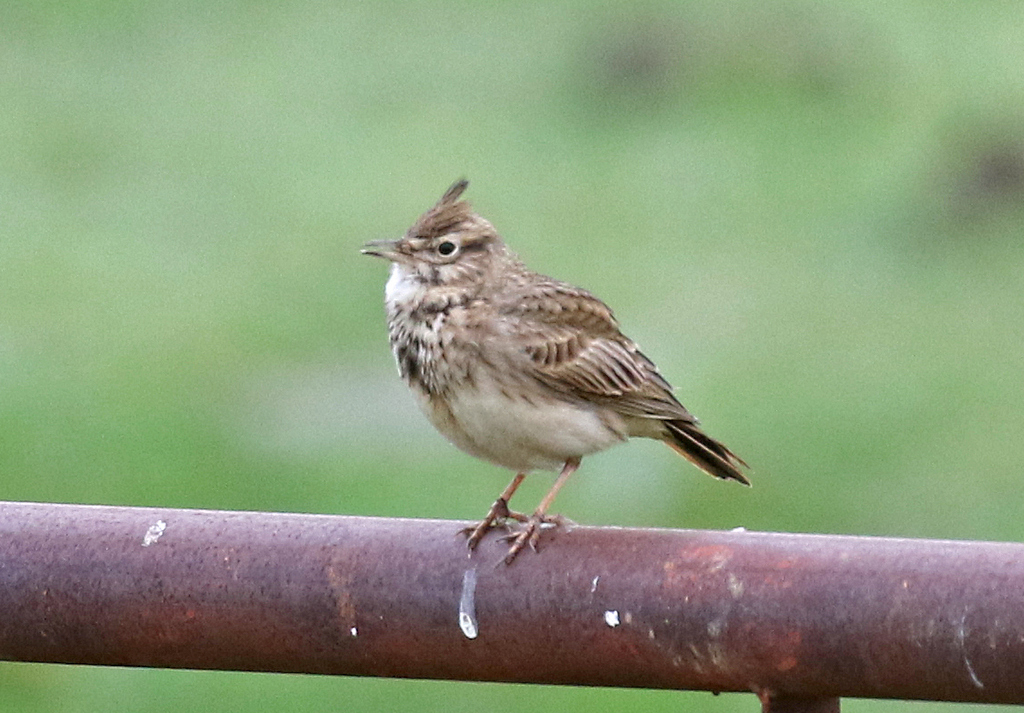
Huge flocks of Spanish Sparrows, several hundred strong kept flying round and landing in the trees on the slope behind us. A Rock Sparrow landed briefly on the fence in front of us but flew off before everyone could get onto it. A large group of Iberian Magpies came out of the trees on the other side of the road, and landed down on the short grass where we could get a look at them through the scope.
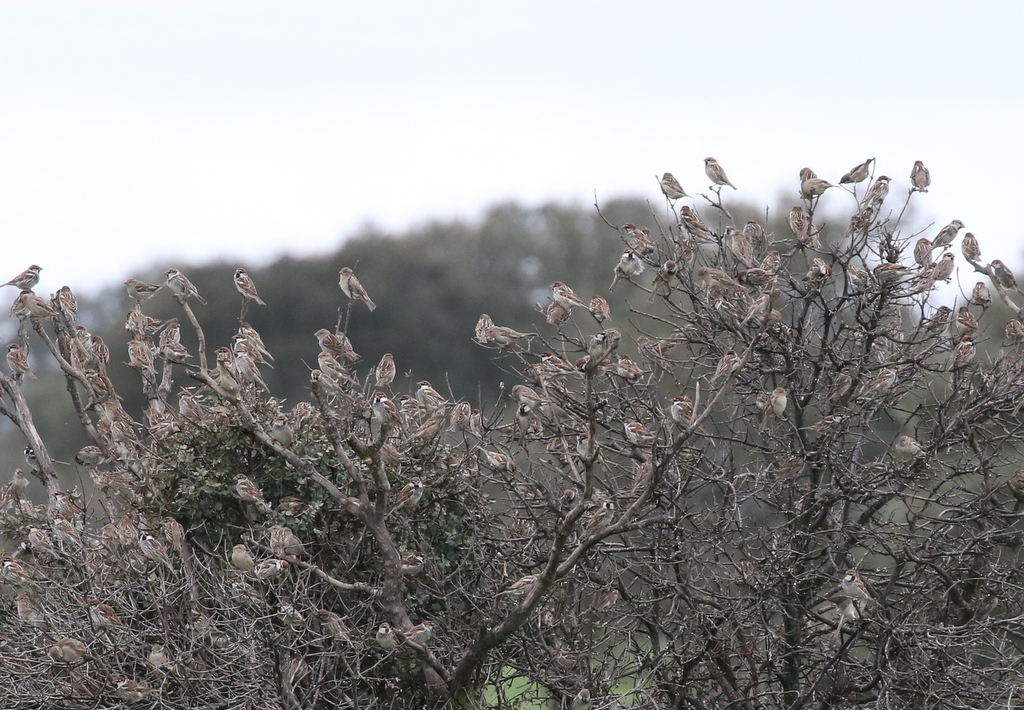
Moving on a little further along the road, we drove down a drovers track which heads out across the plains. When we stopped again and got out, Calandra Larks were singing all around us and we could see their black underwings with broad white trailing edges as they flew round past us. Several Golden Plover were feeding out on the short grass, with the numerous Lapwings. Two pairs of Black-bellied Sandgrouse flew up separately, crossing the track further up, but both landed out of view behind a ridge.
A small group of Great Bustards flying across in the distance only broke the skyline briefly and disappeared behind a ridge too before anyone could get onto them. We drove a bit further up the track to see if we could find where they might have landed, but there was no further sign. We did find a Merlin perched very distantly on a rock across the plains. And as we turned to come back and stopped again, we found a pair of Black-bellied Sandgrouse on the ground up on a ridge which this time lingered so we could get them in the scope.

We hoped the bustards might have gone over the hill to where we had stopped earlier, so we drove back round there for our morning coffee stop. There was no sign of them here either, but there were several Rock Sparrows now, feeding with the Spanish Sparrows down in the grass. A Black Redstart perched on the fence.
After coffee, we drove on through Santa Marta and stopped just beyond the bridge over the Rio Magasca. Several Crag Martins were flying round over the hillside and we managed to see a Woodlark which was singing over the trees on the ridge, before it dropped down out of view. One or two Serins were singing too. Walking down across the bridge, a Black Redstart flicked up on the rocks the other side. Several Long-tailed Tits were calling in the trees and a couple flew across right past us, very dusky birds of the distinctive local race irbii.
We followed the path down to the river, where loads of Chiffchaffs were flitting around, flycatching in the bushes along the bank, along with a single Blackcap. A Kingfisher called as it flew off up the river and a Grey Wagtail was feeding on the rocks out in the middle, where a Spanish Terrapin was resting too before it dropped into the water. A Small Heath which flew up from the grass was our first butterfly of the trip.
Back to the minibus, we drove on to the junction with the Monroy road and stopped again to scan the plains. It was starting to warm up now and lots of white butterflies were fluttering round the grass but wouldn’t land. A large kettle of vultures was circling up away to the west and out across the plains, a single Black Vulture was out on the ground in the distance, stretching its wings.
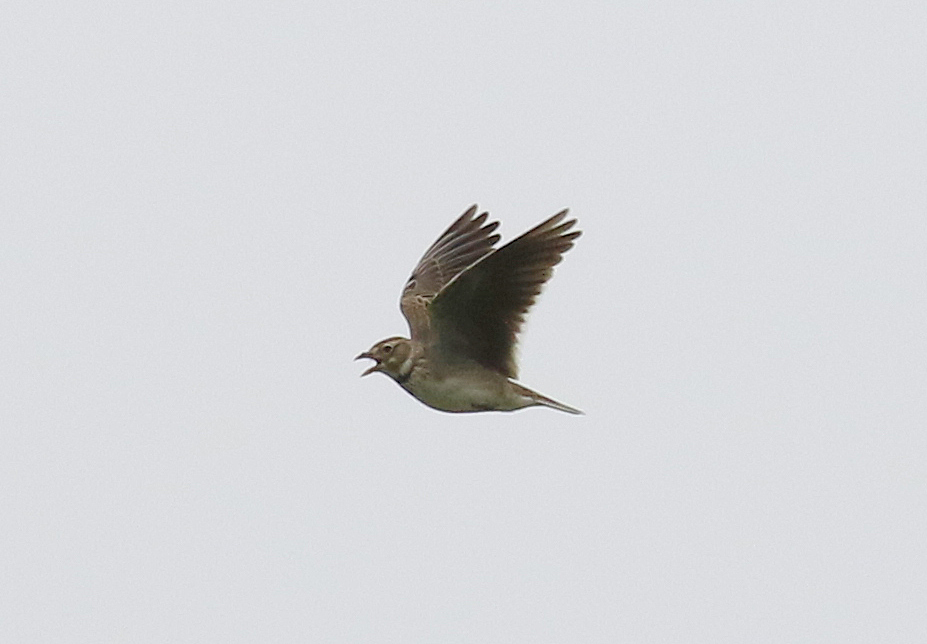
Further along, we stopped again. The Calandra Larks were out in force now and singing all around us, with two males chasing each other round overhead. Scanning the fields the other side, we found a small group of six Pin-tailed Sandgrouse down in the short grass, then as we looked further across we saw loads more. In the end we counted at least sixty! We walked over to the other side of the road for a closer look through the scope.
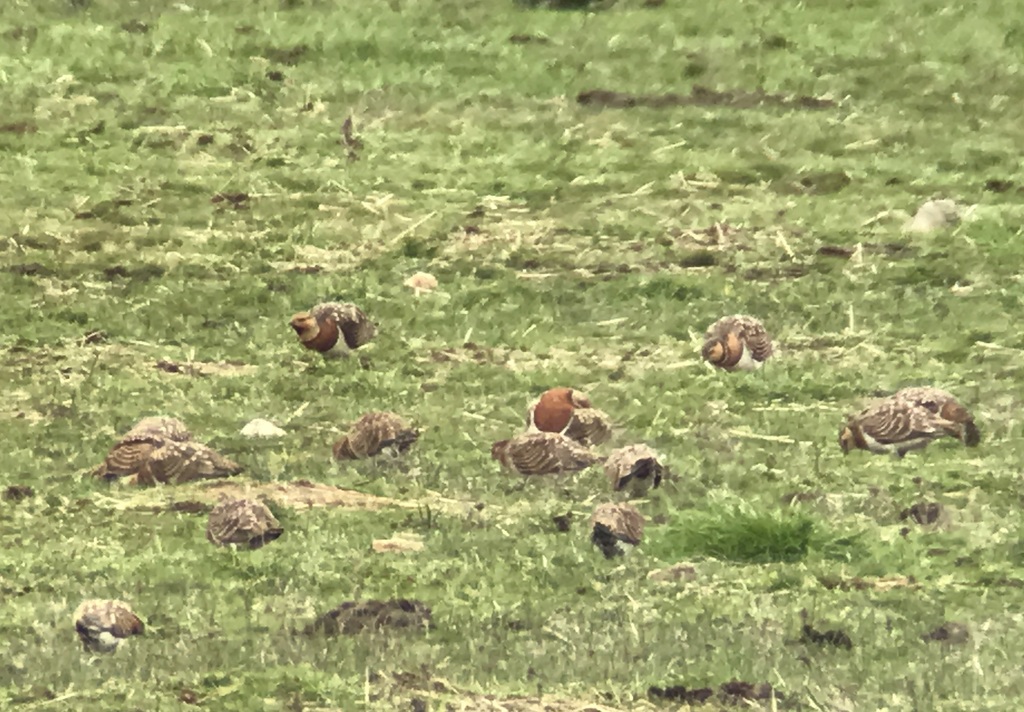
Walking back to where we had parked the minibus, we had to pick our way round all the caterpillars in webs in the grass. One of the group had gone ahead, and shouted as he got to the bus. Four Great Bustards flew across out over the fields beyond and landed on the short grass. We had a good view of them in the scope – great for everyone finally to catch up with some bustards, iconic birds of the Extremaduran plains.

After lunch, we carried on further down the road, and stopped for a quick look at a Little Owl on a wall out in the middle of a field. Another two Little Owls were on the top of a ruined barn in the distance the other side.
There had been a Sociable Lapwing not far away seen several times in recent weeks, but we were not sure whether it had been seen in the last week. We had managed to get hold of the co-ordinates for where it had been seen, so we drove over to see if we could find it. As we drove down a rather rough track, it suddenly seemed to get very busy (rush hour on the plains!). We were overtaken twice, and when we stopped at the right spot several more trucks came bouncing past. All the regular Northern Lapwings which had been out on the grass near to the track flushed and several groups flew off, although we couldn’t see the Sociable Lapwing with them.
Some fodder had been spread across the grass, and a few Corn Buntings and two Rock Sparrows were feeding in the straw. Some of the Lapwings started to drop back in and scanning carefully across the grass further back, we found the Sociable Lapwing, smaller and browner than the regular Lapwings and with a striking pale supercilium. Sociable Lapwings breed across the Central Asian steppes and winter mainly in East Africa, the Middle East and into Pakistan and NW India. It is principally a rare vagrant to Western Europe but one or two appear most winters in Iberia and it is thought that this may be a regular wintering location for very limited numbers. The species is listed as Critically Endangered as its population has undergone a very rapid decline in recent years, so it is a great bird to be able to see.
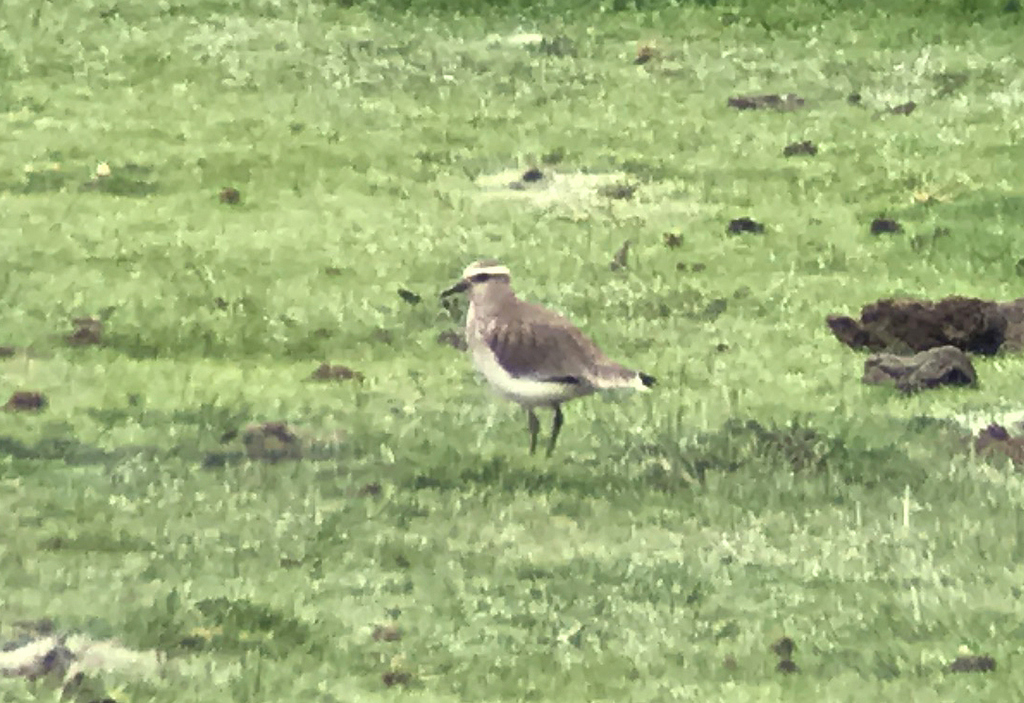
Making our way back west, towards Monroy we stopped abruptly as a raptor drifted high over the road, a Spanish Imperial Eagle. We all piled out and got it in the scope as it circled up, eventually drifted away to south. A welcome bonus, as this is not a site where we often see them. Further on, three Griffon Vultures were loafing on the pylons by the road, so we stopped again for a closer look.
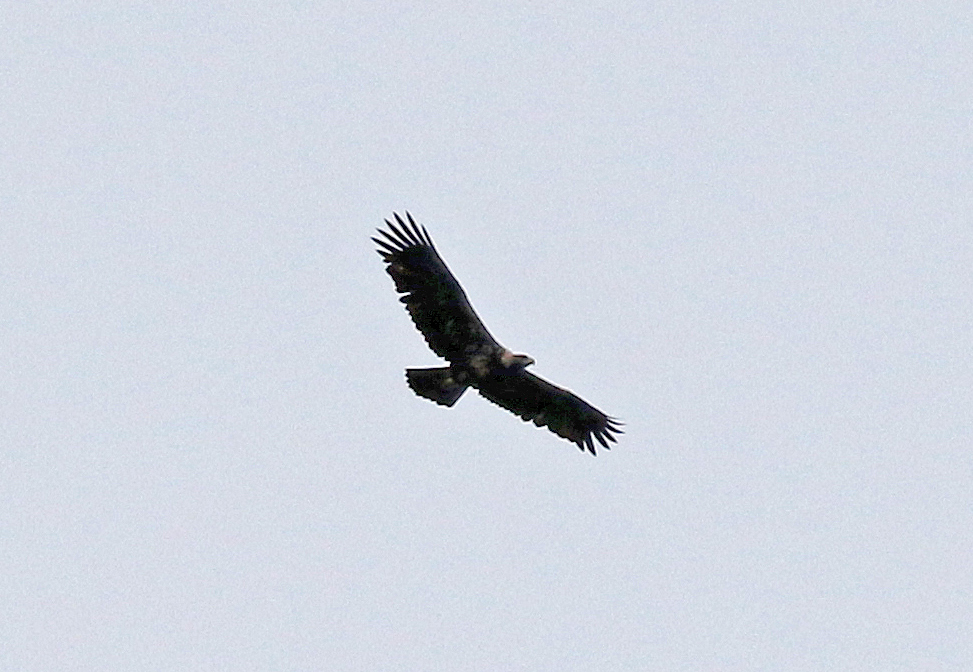
Beyond Monroy, there were lots of Common Cranes in the dehesa by the road. We got out very carefully and had a good look at a large group before something eventually spooked them. Several hundred took off from where we couldn’t see them and landed further back out of view in the trees, and more were still bugling further on. We stopped again a couple of hundred metres down the road, were two very obliging Cranes were standing in a field of yellow flowers.

Driving down towards Caceres, we were taken aback at the enormous scale of the new solar farms being built out in the middle of the countryside. What will the ecological impact of all this construction be?
Dropping down towards the Rio Almonte, we stopped just beyond the bridge. Lots of Crag Martins and House Martins were circling overhead and flying down to prospect their nest sites under the bridge. As we walked down the track towards the river, a female Blue Rock Thrush was on the rocks below us, but flew low across the water and disappeared on the bank the other side. We were just scanning to see if we could find it again, when one of the group found a Black Wheatear along the far bank, low down on the rocks. We had a good view of it in the scope, jet black with a striking white base to the tail. A second Black Wheatear on the near bank, further up, was a sooty brown female. A smart male Black Redstart appeared briefly on the rocks closer to the road bridge.
Time was getting on now, and we still wanted to make one last stop. As we drove out along the minor road onto the plains, there were lots of Lesser Black-backed Gulls in the fields. A small pool beside the road held a surprising selection of ducks – two Shoveler and six Gadwall, along with several expected Mallards. A Raven was perched on the top of a pylon and as we stopped and got out, we realised there were Red Kites everywhere, flying round, and perched on pylons and fence posts all around us.
A Great Bustard came up from the crop field, away on one side of the road, quickly followed by two more. They flew across the road and dropped down onto the plain in the distance. More and more followed, in ones and twos, until we eventually counted 24 Great Bustards which all flew across the road. We drove further up to see if we could see where they had landed, flushing loads of Corn Buntings and Meadow Pipits from the fences as we passed. We could see two Great Bustards distantly out on the grass, but the light was fading fast now. Another delicious dinner awaited us back at the hotel.
SUNDAY 2ND FEBRUARY
The regular flock of Iberian Magpies was by the parking area first thing, as we packed up the minibus, before flying down to the paddocks across the road. A Blackcap was in the bushes nearby. As we drove down to the main road, an Iberian Grey Shrike was on the top of a telegraph post and a Hoopoe flew in and landed on the wires next to it.
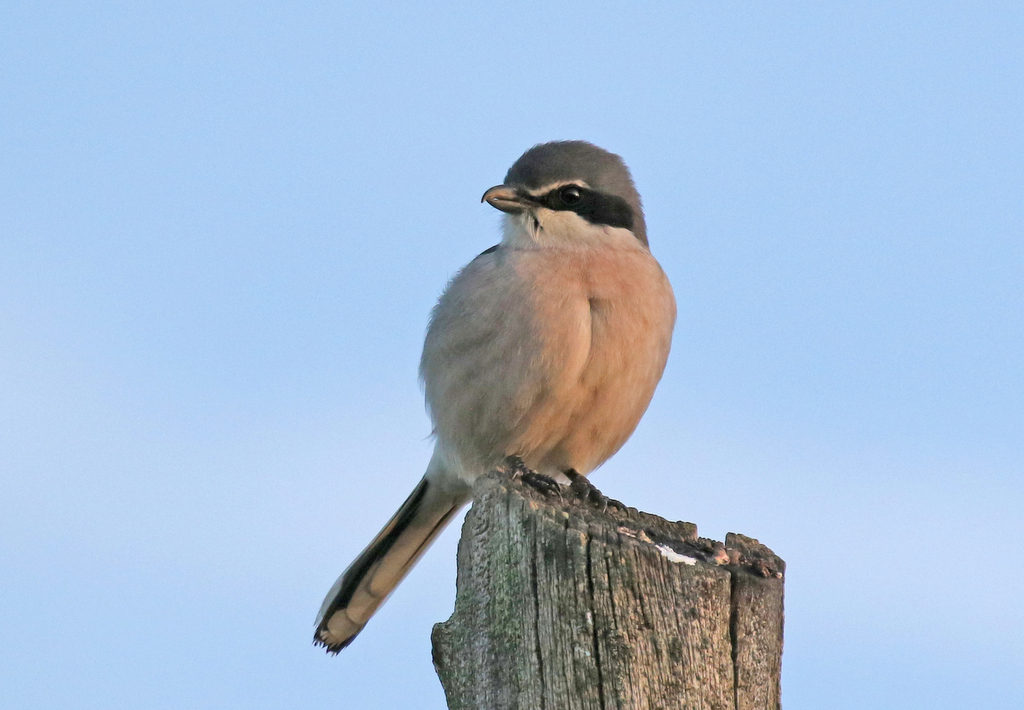
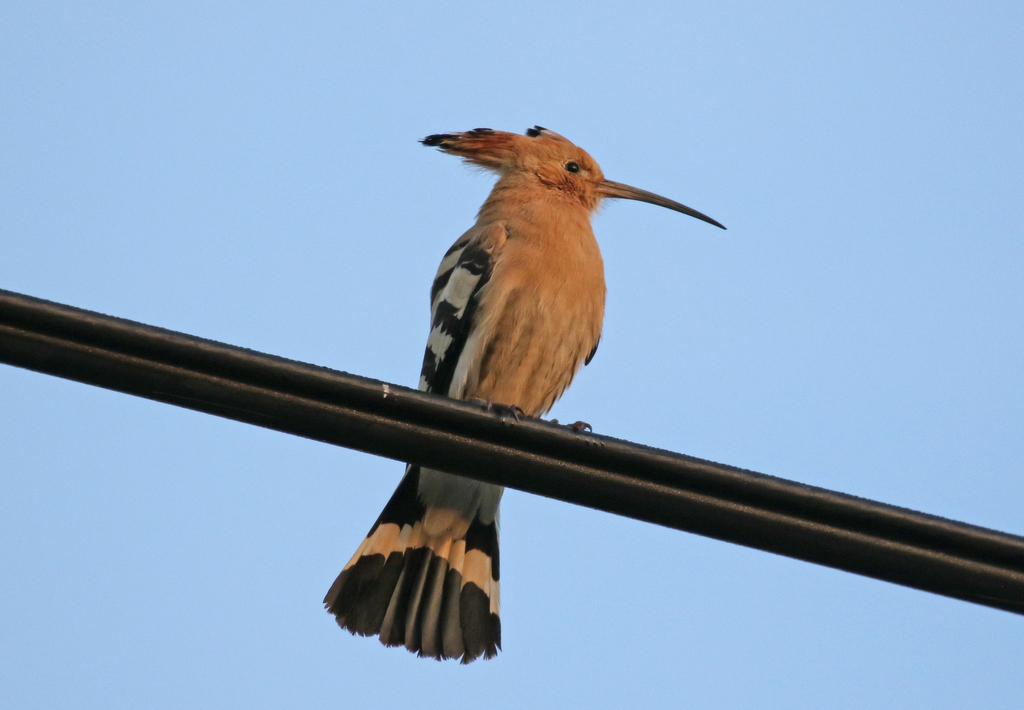
Again, there were quite a few Barn Swallows on our drive south, on wires in the villages and flying round. A pair of House Martins were already prospecting nests in Zorita village. A little further on, we pulled up alongside a pool by the road, where a Great White Egret was fishing. Two Black-winged Stilts were on the far edge of the water too.
Our first destination for the day was the reservoir at Alcollarin, and we pulled up by the dam to scan from here first. There was huge numbers of ducks out on the water, the thousands of Northern Shoveler being particularly impressive, along with hundreds of Wigeon and Teal. Looking more closely through the vast throngs, we found a few Gadwall, a couple of pairs of Pintail and a single lone Tufted Duck too. Two pairs of Egyptian Geese were on the far shore.
There were lots of grebes as well, particularly Great Crested Grebes and Little Grebes, but also quite a few Black-necked Grebes out in the middle. Mostly the latter were in black and white winter plumage, but a couple were already coming into breeding dress, with black necks and golden ear-tufts. A very distant Spoonbill and Black Stork could be made out at the far end, and the size difference between a Great White Egret and a Little Egret could be appreciated even at that distance. A Kingfisher landed on a dead stump on the water’s edge at the back, where it shone in the morning sunshine. A Sardinian Warbler flew across into the olive trees by the parking area. When a large group of noisy cyclists came over the dam towards us, we decided to move on.
As we drove down the track on the hillside east side of the reservoir, we stopped again to scan. We could see there were more Spoonbills than we had been able to make out earlier, at least five together now, busy sifting in the shallow water. Lots of White Storks were standing out on the short grass and the Black Stork was nearby, to compare. A Woodlark was singing over the hillside behind. As the mob of cyclists came down the track, everything took off and flew back towards the main reservoir out of view.
The first Red Kite of the day circled up over the hills beyond, and we looked over to see two Ravens mobbing a pale raptor on a rock, just as it dropped off and disappeared behind, out of view. Our first impression was Booted Eagle, but they are mainly summer visitors here. We continued on to the picnic area by the smaller pool further down and walked out onto the platform by the small dam. Scanning the hillside, it wasn’t too long before the pale adult Booted Eagle reappeared, a very scarce bird here in the winter. It circled up with the Red Kite, which was bigger than it in size – Booted is a rather small eagle.
A small group of Common Pochard were swimming around at the back of the pool. Several White Storks were on nest platforms in the trees, and when one flew in, we could hear the pair bill clapping. A Kingfisher perched up in the reeds by the channel downstream of the dam, then came and landed much closer, where we could finally get a good view of it in the scope, a Zitting Cisticola was flitting around down in the rushes and a Crested Lark was singing from a small rock nearby. Two Common Waxbills flew in and landed briefly in the reeds close to where we were standing and a Great White Egret flew up and landed on the dam.
As we walked further up the track, up the valley beyond the picnic area, we found a couple of Dunnocks in the trees, plus a Robin, a few tits and several Chaffinches singing. With the air starting to warm in the sunshine, more raptors were starting to circle up. Three Marsh Harriers appeared over the pool and a young male started displaying, twisting and swooping like a roller coaster. The female lower down didn’t seem particularly impressed. Two very distant Black Vultures were over the higher hills beyond.
Then two Bonelli’s Eagles circled up over the trees beyond the pool. One of the Marsh Harriers circled up with them, and started to mob them, swooping down at them from above – we could see how much smaller it was than the eagles. As the Bonelli’s Eagles circled, we could see the white patch on their backs. Eventually they gained height and drifted back over the hillside. We headed back to the minibus for coffee.
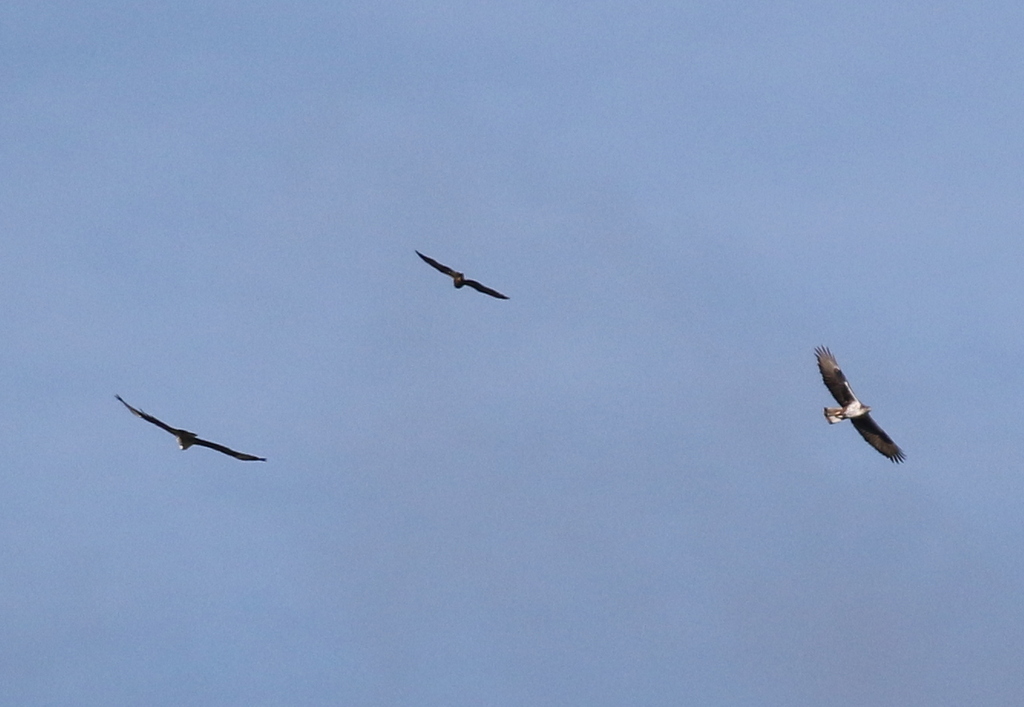
After coffee, we decided to move on. As we drove down the minor road towards Campo Lugar, we ran into a traffic jam – a flock of sheep being herded along the road towards us! We had to wait while they were chivvied all round and past us.

The other side of village, seven Black-bellied Sandgrouse flew over as we turned onto the road over the plain. A Hoopoe flew along ahead of us, and kept landing on the wall by the road. We stopped at the top of the hill to scan the plains. There were lots of larks, Meadow Pipits and Corn Buntings all around us, but no sign of any bustards.
Our next stop was at the Sierra Brava reservoir. Lots of fishermen were stationed around the shore, despite the ‘no fishing’ signs. There were quite a few ducks way out in the middle – more Shoveler, Wigeon, a pair of Pintail – but less here than at Alcollarin. There were lots of Great Crested Grebes too. We could hear Common Cranes bugling and could see dozens out in the rice fields in the distance below. There were more standing on the grassy hillside beyond the reservoir, with occasional pairs of small groups of birds commuting from one to the other.
It was a beautiful warm day now, with clear air and a great view, so we decided to stop here for lunch. A pair of Sardinian Warblers was flitting around in the bushes below the dam. Several more white butterflies were more obliging here – a couple landed long enough to identify them, Western Dappled Whites.
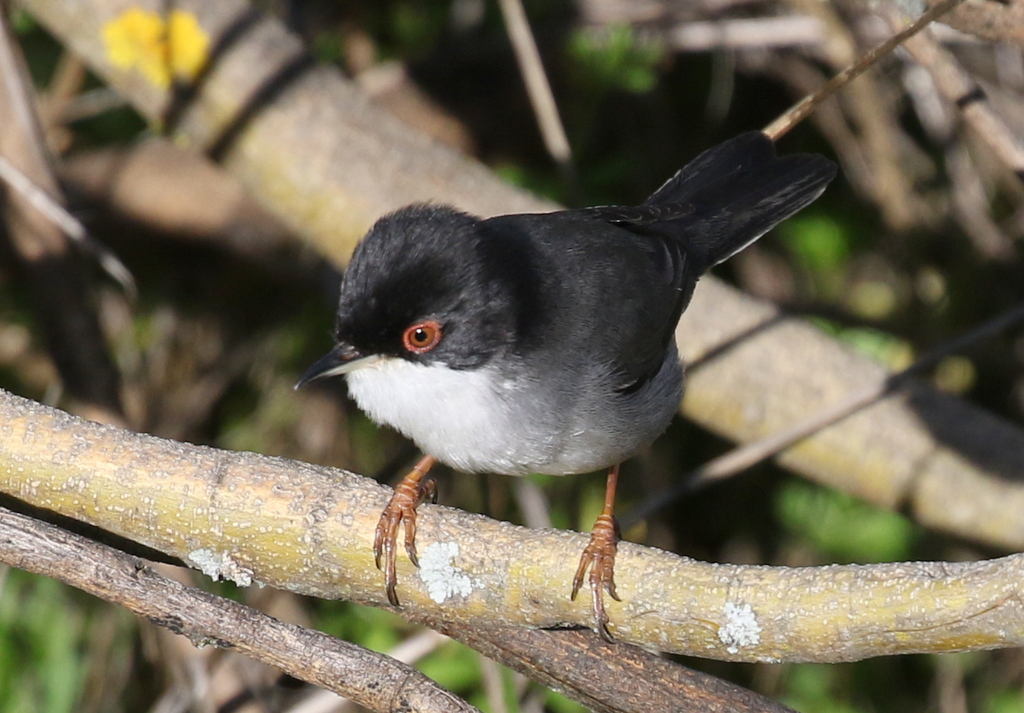
After lunch, we carried on towards the rice fields. As we drove through a rocky area, we flushed a Marsh Harrier from the ditch beside the road, presumably off a kill. Six Ravens were waiting patiently nearby for any leftovers. There were lots of Cranes on the grassy hillside next to the road here, so we stopped and got out carefully. They were remarkably obliging, and posed nicely for photographs. Then when we got down into the rice fields, there were hundreds and hundreds of more Cranes all around us, feeding in the wet paddies, with some even more accommodating.
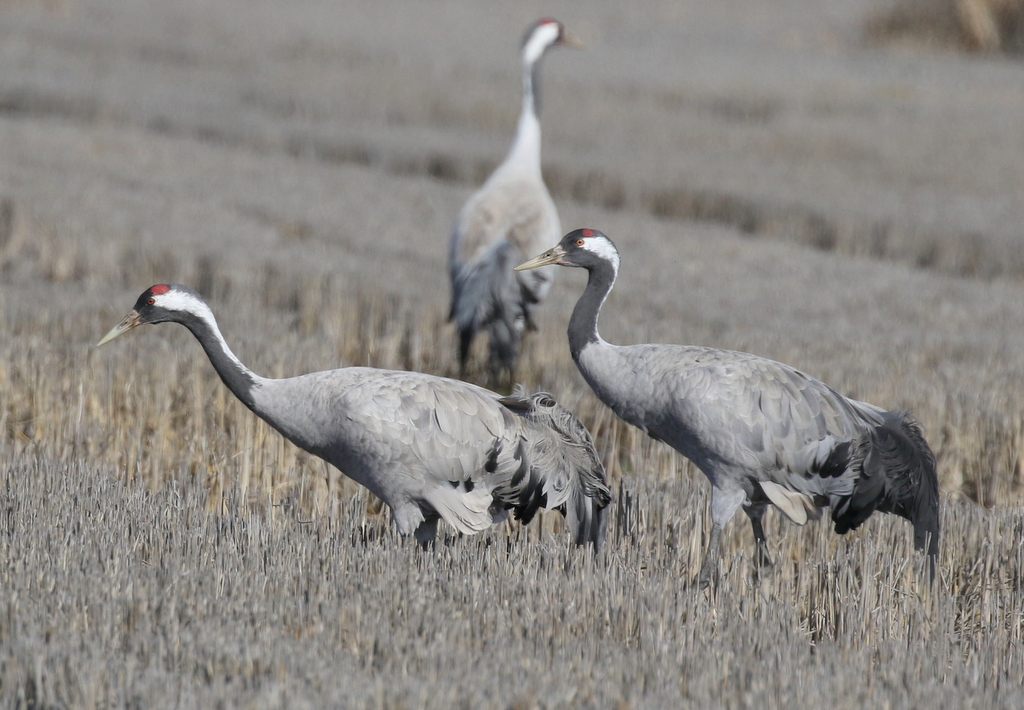
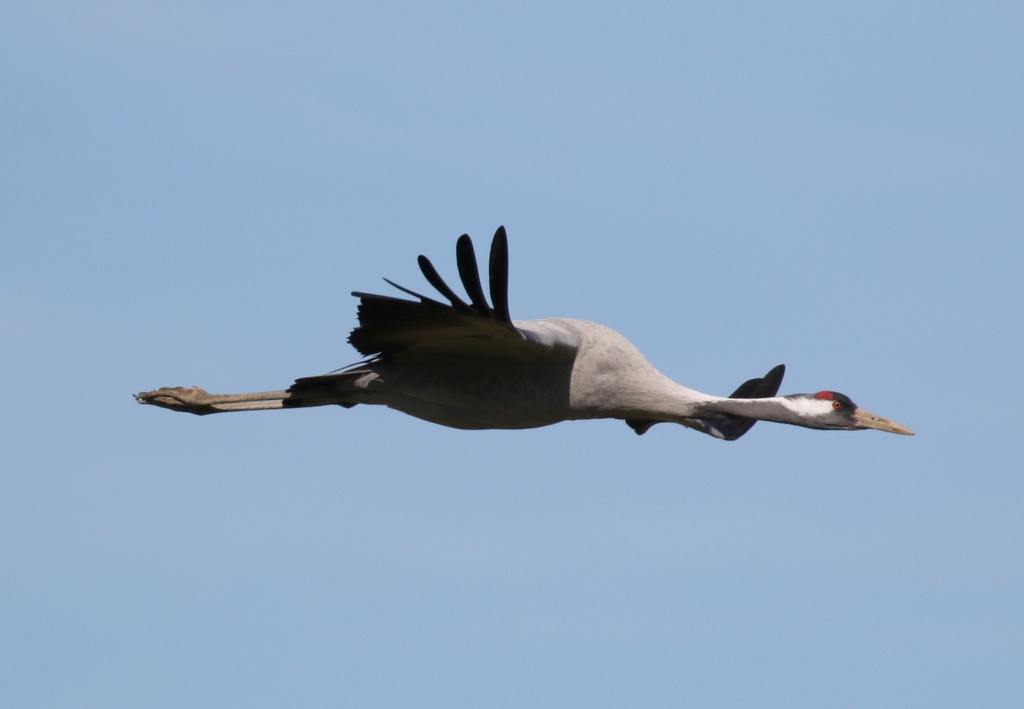
As we stopped and got out, a few small groups of wild Greylag Geese flew up out of the fields. A flock of small finches flew past, disappearing round behind a bank where they appeared to land. We walked down the road and looked back to see them bathing in the reeds on the edge of one of the paddies, a group of Red Avadavats. Originally from India, there is now a well-established feral population in Spain. A single Green Sandpiper was feeding further along the edge, in the water amongst the clods of earth.
We were just getting back into the minibus when a ringtail Hen Harrier appeared. Everyone got out again remarkably quickly (and without anyone getting trampled in the rush!) and we watched it working its way low over the weedy banks around the edge of the fields.
